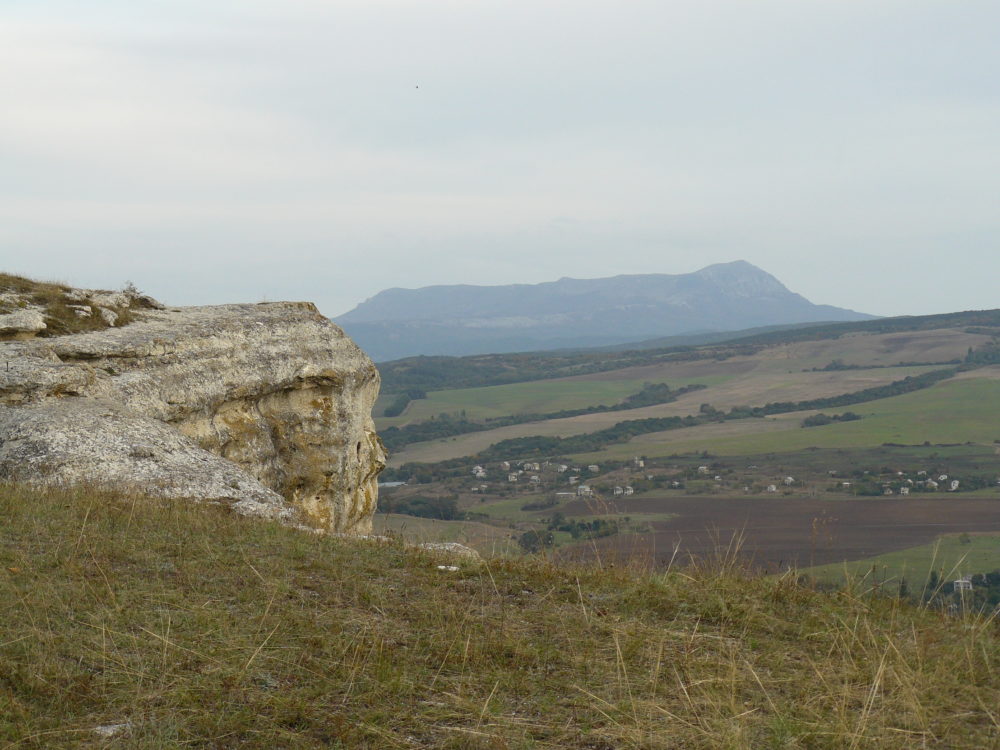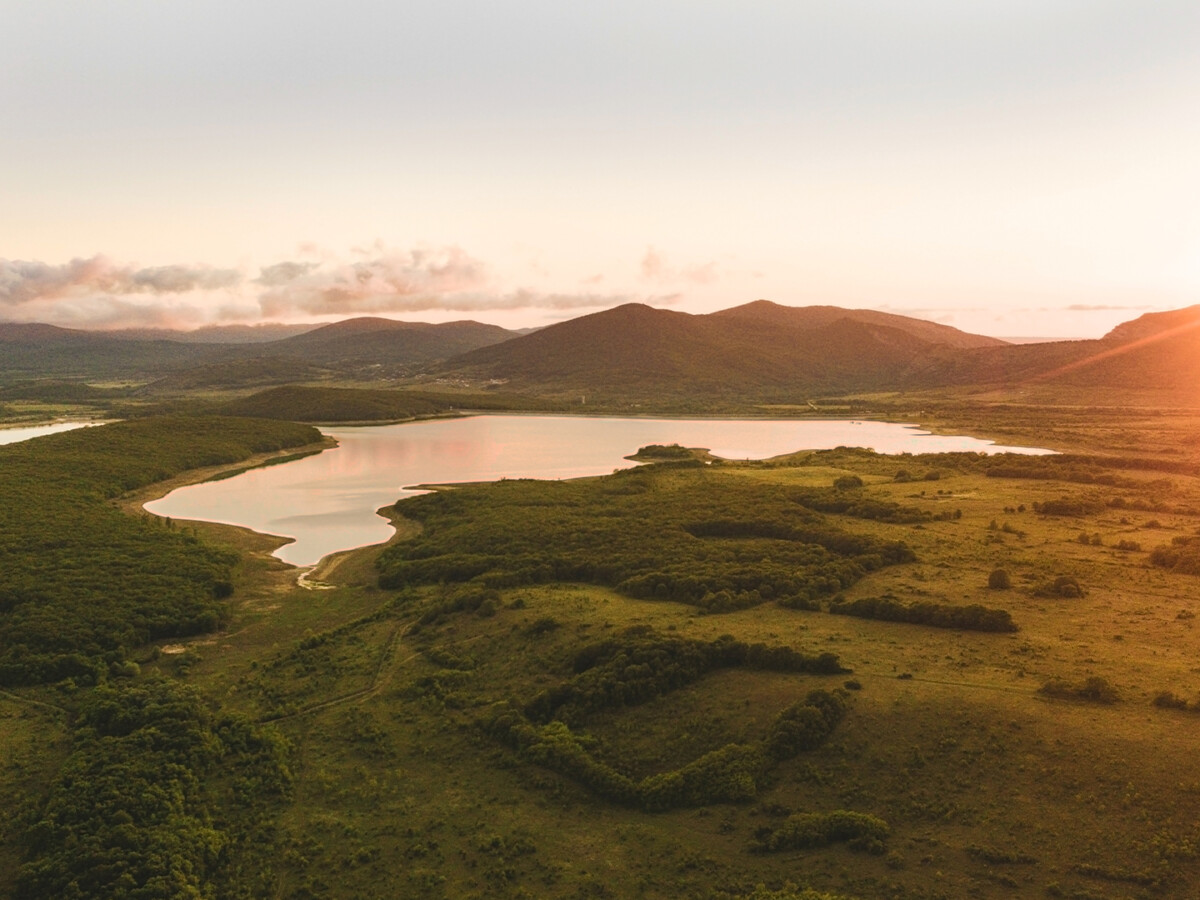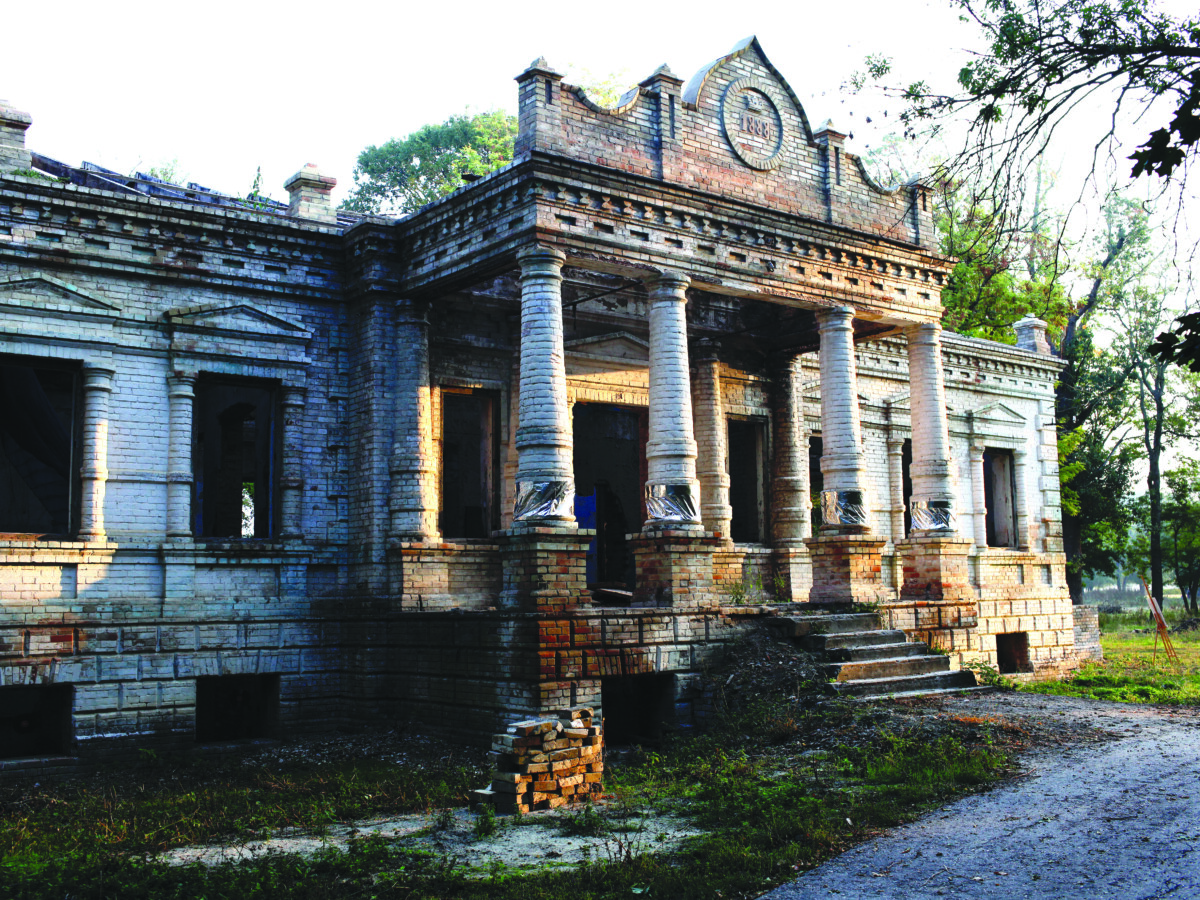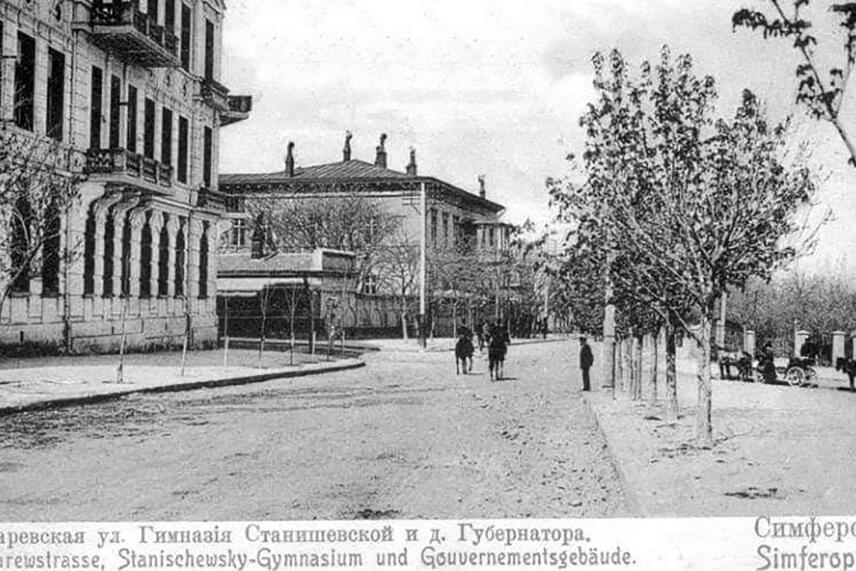After a long quarantine, a soul yearns for beauty and body needs action. So, it’s time to bring your family to go on a micro expedition to explore mysterious historical and natural monuments, which are located near Simferopol. The path is easy and doesn’t take much time, as well as the abundance of striking landmarks, which kids and adults will be interested in, are the advantages of the “Time machine trip” itinerary.
In this case, the shuttle bus № 78, which goes from Simferopol to the settlement of Fontany, will be your “time machine”.
Interesting fact
Archeologist Askold Shchepinskiy discovered traces of settlements dated the early Iron Age in the Tash-Dzhargan natural boundary. Agriculturist and pastoralist tribes lived here almost three thousand years ago. Ancient people felt perfectly the land’s harmony. Different cultures, world views and traditions didn’t keep Taurians and habitants of Kizil-Coba from coexisting peacefully.
Tash-Dzhargan. The way river cuts through rock
Reflecting on good neighborliness, we are slowly reaching the first point of our route. The way leads to precipices. They offer a beautiful view over the Main Range — from Dolgorukovskaya to Ai-Petrinskaya Yaila. The contour of the Chatyr-Dag mountain massif occupies a central place in the mountain scenery. All the Crimean land is beneath your feet.
The diverse reliefs made Tash-Dzhargan a place of conducting trainings and sport tourism competitions. The landmark event for active tourism known as “Remembrance of Friend” Meeting is held here in the first weekend of October.
The cliffs thoroughly treated by the sun, water and wind possess fanciful outlines. The first unique place is an eye-catchingly located cavern. It looks like a giant jug. About five meter round hole in diameter gapes right on the edge of the cliff. If you carefully look into the “bottle neck”, then you will see smooth and curved walls of the grotto with the height up to 12 meters. The grotto is opened to the valley. A tourist can climb down the trail to the foot of the rock and get inside of the “jug” and feel himself/herself like a jinn trapped in it. It’s well-known that this character of oriental fairy tales is able to perform miracles. If we consider a jinn as a an impersonation of forces of nature, then we can assert: acting of element powers confirmed the bravest suggestions of scientists.
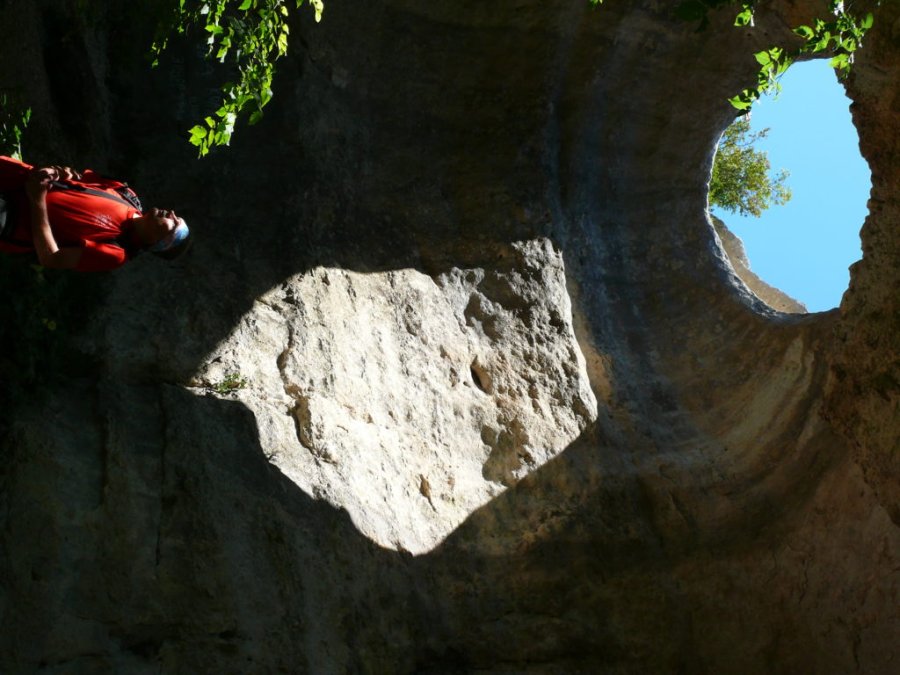
More recently, the view that the cavern was formed by water, which was reaching up through tectonic cracks under the pressure from the depth of our planet in the far geological times, prevails in science. The place, where a stream couldn’t break through terra firma, water was rushing about and literally licking off a pliable stone and sculpting a dome within the strata of the lime stone. When water went away, then wind, rain and snow finished the work. They hewed off the stone in the way that a hole emerged at the top of the dome and one of the walls broke off and after the grotto was formed.
In spring, Tash-Dzhargan provides people with a good heart with a performance of admiring wonderful flowers. Snowdrops, bluebells, primula and pasque flowers appear first at glades. A little bit later, the yellow lights of pheasant’s eye or Adonis flash up as sunbeams.
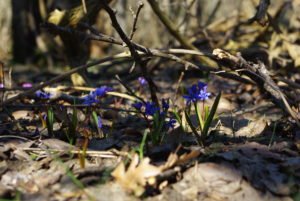
Peonies are burning with the color of red flame. Lilies of the valley and beautiful forest peonies hide under the forest canopy. When some time passes, flower stems of asphodeline will come up and fire red poppies will swing in the wind. You shouldn’t pick those beauties — delicate creatures won’t live a long time.
Snake Cave. It crave for sacrifices
The natural boundary that is next to Tash-Dzhargan is called the Battery Cape. Several vertical cracks cut through the thirty meter massif from the top down and make it look like a good old cast iron heating battery.
Main mountain ranges of the peninsula are perfectly seen from the top of the cape: Tyrke, Demerdzhi, Chatyr-Dag and Babugan. The Partizanskoye water reservoir is right in front of us.
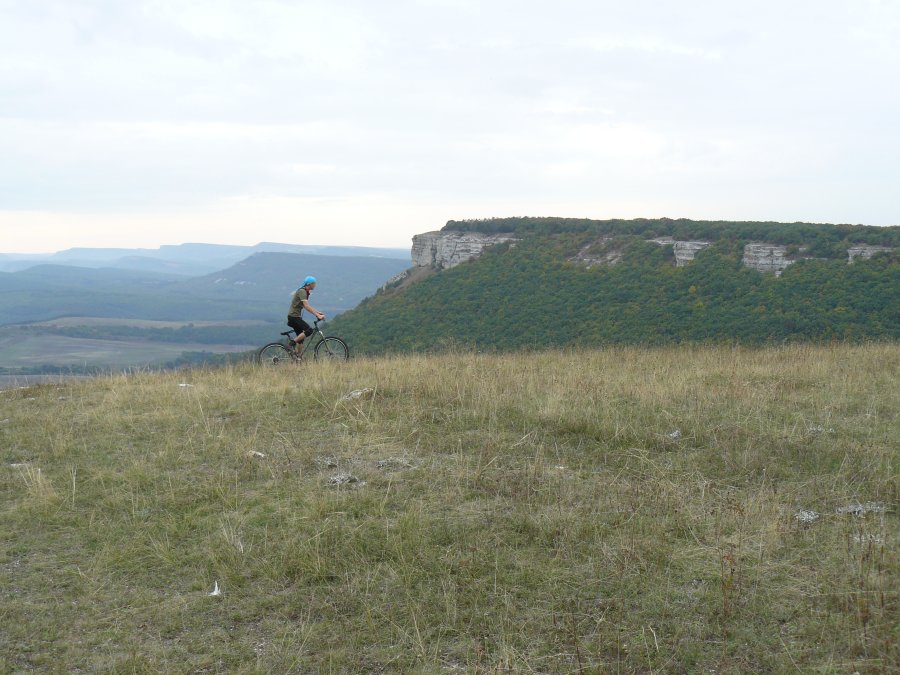
The entry to the Snake Cave is hidden in the depth of the cape. It isn’t equipped for visiting, thus it is accessible only for people, who have rock climbing skills and skills of orientation in the underworld. If you can’t boast of having such skills, then you shouldn’t risk. As any cave, the Snake Cave is a gloomy place and it warrants its name: narrow tunnels meanders like a snake. There, archeologist Askold Shchepinskiy collected fragments of dishware used by the habitants of Kizil-Coba in VII-VI centuries B.C., as well as a large number of bones of pets. The scientist concluded that there was sanctuary in the cave, where aborigines offered sacrifices to spirits of land fertility.
Kobazi Grotto. Cradle of humanity
However, people took up residency in these places much earlier. The archeological discoveries found in the Kobazi Grotto (word derived from the Crimean Tatar word “koba” that means a cave) clearly proved that this terrain was inhabited back in the Stone Age.
The paleolithic camp site was discovered by Konstantin Merezhkovskiy in 1880. At that time, discoveries of the monuments of the Primal Age caused a furor in Europe and ambitious young man (he was a student of the faculty of sciences of Saint Petersburg State University) decided to find traces of paleolith in Russia. The searches were crowned in success.
During the Soviet times, Alexander Formozov continued searching started by Merezhkovskiy. Working in Kobazi, he found out that a misfortune fell upon the locals: by the looks of things, the giant “cornice” collapsed as a result of the earthquake. The dwelling had decreased several times, but hosts didn’t leave that place. The archeologist excavated several campfire sites on the ground in front of the fallen canopy. It was determined that branches of fir tree were burnt there.
Plenty of pieces of flint were scattered around and collection of stone tools were taken up among them. Animal bones discovered near fireplaces showed that Neanderthals successfully hunted wild horses, wild donkeys, royal stag, saiga and bison.
Grotto of temple. Nature masterpiece
An impressive grotto located not far from Kobazi will become the last object of our hike. A large hall has a rounded shape. It’s so regular that it’s rather difficult to believe that this lodgment is of a natural origin. Seemingly, both the dome and Tash-Dzhargan’s jug were formed by waters, which tried to break free from depths of the earth.
The title “grotto of temple” was proposed by Konstantin Merezhkovskiy. Here, he also found the traces of the Stone Age. It’s a landmark place! More than likely, when humanity was in the age of its childhood, it interacted with supreme forces here!
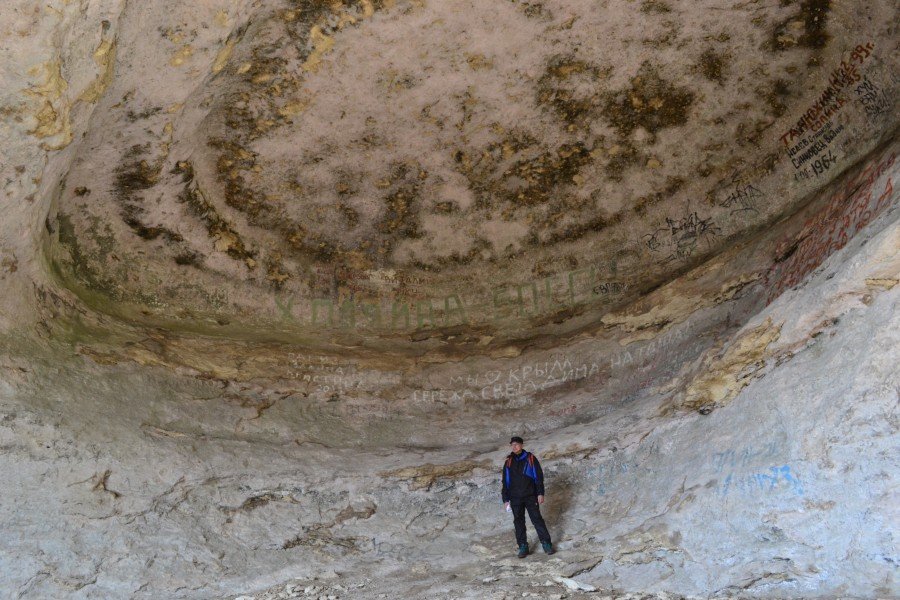
Nevertheless, it’s high time to return into the modern world. The way back goes through a man-made pine forest. Growing on limestones, Crimean pine trees reached a respectable age. Breathe in healthful phytoncides, charge your body with a reserve power and your soul with pleasant impressions for a week in advance.

